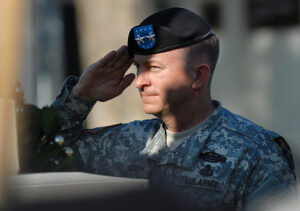
Studies pointing to skyrocketing mental health costs for veterans as well as a new initiative from First Lady Michelle Obama suggest that one of the biggest concerns for the 2013 homecoming of Afghanistan combat troops will be helping these new veterans treat posttraumatic stress disorder (PTSD). But Anthony D. Mancini, an assistant professor of psychology at Pace University, argues that what he dubs the “PTSD epidemic” is unjustified.
His soon-to-be released study focuses on the soldiers’ capacity for resilience and ability to cope with the stress of deployment.
Despite studies that seem to report a large frequency of PTSD among veterans, Mancini contends in a New York Times opinion piece that the prevalence of PTSD among veterans of recent wars is actually only about 10 percent, which is much lower than most believe:
“This story of resilience has been ignored, partly because many assume that humans are inherently vulnerable to trauma. That belief makes us receptive to messages, most delivered by the media, that reinforce this perspective. A growing body of scientific research, though, is telling another story: in short, that a traumatic event does not necessarily sentence a person to PTSD. Although an exact figure cannot be determined, a series of population-based studies has provided estimates that it occurs in just 5 percent to 20 percent of service members deployed to Iraq and Afghanistan, with most studies hovering around 10 percent. In a representative study soon to be published in the British Journal of Psychiatry, my colleagues and I examined stress responses among more than 7,000 members of all United States service branches, before and after their deployments. The respondents were not seeking treatment and were representative of the military as a whole. Perhaps most important, their reports were confidential and had no bearing on their military careers.”
He found that 83 percent of the participants showed a “pattern of resilience” and were able to normally cope with stress both before and after deployment. Fewer than 7 percent showed signs of PTSD following their deployment, and these numbers dropped to 4 to 5 percent among soldiers with multiple deployments.
Mancini concludes, “With these challenges ahead of us, we should remember that PTSD is a treatable condition and that a realistic and informed understanding of our inherent coping abilities can only assist treatment and, perhaps one day, even prevention of this debilitating disorder.”
Source: The New York Times
Heather Rudow is a staff writer for Counseling Today. Email her at hrudow@counseling.org.


Comments are closed.